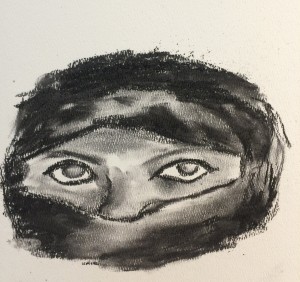The Power of Sight
While reading an Egyptian Childhood, I was fascinated by the power of eyesight and the significance and meaning of the ability to capture light though a window to one’s soul. Taha Hussein idolized the group of religious elders who shared his disablility. He learned about the world in ways different from his peers because of his inability to understand everything he saw while playing outdoors as a child. While reading The Saint’s Lamp this symbol became even more pronounced. Fatima’s progressing blindness is a problem central to the family, as they all wish to eradicate it so that she is able to see. “Light” from the Saint’s Lamp is seen by the religion to be the cure for Fatima’s blindness, although in reality the light they would pour is really just oil. When Ismail discovers that his mother has poured the oil from the Saint’s Lamp into Fatima’s eyes he is furious. His feelings about Western science are such that he cannot reconcile religious superstitions with his newfound medical knowledge. The concept of sight versus insight is a theme central to the story, as Fatima’s sight is taken forever just as Ismail’s insight is stunted in mid-action. He entirely dismisses the religious upbringing that he was raised with. These themes combined with the tradition of some cultures to wear burkas prompted me to create this charcoal drawing. I wanted to capture the importance of eyes and sight as it is one of the few parts of both the male and female bodies that is visible to the general public. I find it interesting that woman are only connected to the outside world thorough their eyes, and Taha Hussein’s eyes are the only part of his body that is disconnected from the outer world. This contrast and the theme of sight as it relates to insight prompted me to represent the problem through a medium of visual art.